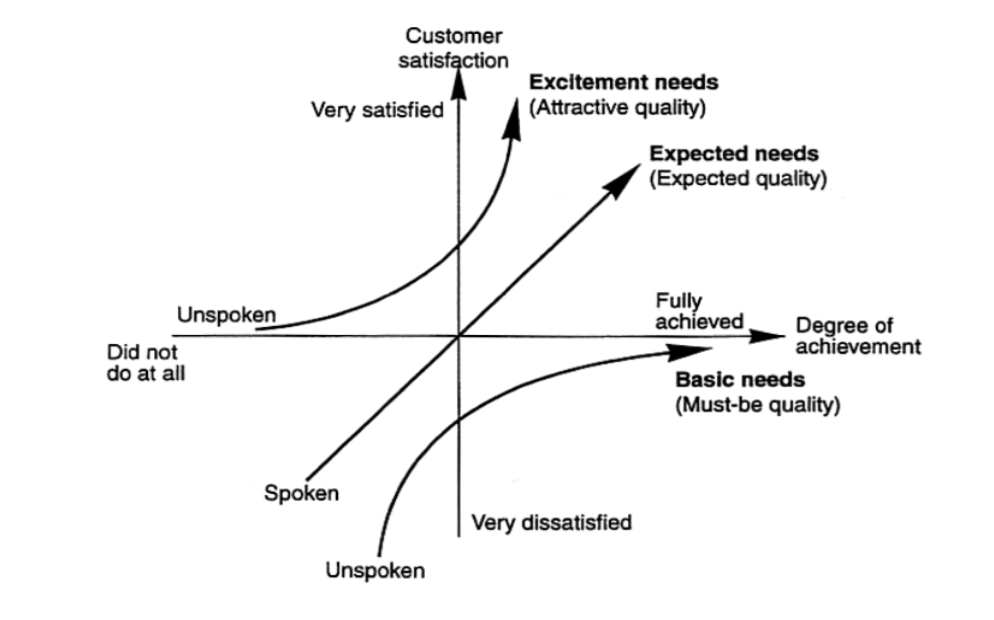This article is full of surprising statements.
Customers are really important. That isn’t one of the surprising statements, hopefully that is fairly obvious! The surprise is that, despite customers being so important, customer focus is often relegated to being an ad-hoc satisfaction survey by some SMEs.
A good company strategy has 3 – 6 strategic objectives, one of which should be directly focused on your customer-base. The goal is here is to create customer loyalty because over time a customer becomes more profitable, so losing them is damaging to your overall potential.
The next surprising statement is that satisfaction will not result in loyalty. The two are different things, and there is a lot of research to suggest satisfied customers may still not be loyal.
A number of studies have investigated the relationship between loyalty and satisfaction, some of which indicate the existence of a threshold of satisfaction whereby loyalty increases considerably (Oliva et al, 1992), while others look at the difference between a satisfied customer and a delighted customer.
Many businesses use the a model devised by Dr. Noriaki Kano, appropriately called the Kano model, to establish how to delight customers.
Attractive Requirements are the unspoken, unexpected qualities that the service and product can provide. Have a think about your customers and why they use your service – what are the unspoken or unexpected qualities that delight them?
Unexpected qualities surprise the customer and provide joy, leading them to be delighted and ultimately loyal. As part of your strategy around customer focus, work needs to be done on what these requirements are, producing a list beyond the basic specification.
Try mapping your current customer survey questions on to this model and you may find surprisingly little information is being collected that is of use to your business.
Customer Focused Activities:
We’ve established customer loyalty is crucial to success and more than just satisfaction, so what activities do you need to be factoring in when considering your strategic objective around customers? Here are some ideas…
Customer Focus Group:
Customer Focus Groups can be a great way to understand how a customer uses your product, their experience with it, feelings around it or intentions for future use. It can provide a good foundation to get a number of views and is often conducted with interactive games and short presentations.
The goal of this process will be to determine quality dimensions to your product. Within the Kano model these are expected requirements and provide a fundamental list of areas the product and service must achieve.
Customer Journey Mapping:
Producing a customer journey mapping is a useful method to understand the different touch points the business has with clients. This approach will provide information which can be used when structuring the customer survey and providing an important high-level overview of the way a customer travels through the company.
Customer Satisfaction Survey:
There are some great methodologies to surveying your customer – such as NPS or Customer Effort – and in general they are an important part of gathering information… but they are useless if implemented badly or the feedback does not go to the right part of your business.
When constructing your survey consider your objectives, the current frameworks out there, and the areas you may need to understand (e.g. availability, responsiveness, convenience, reliability, completeness, pleasantness). Form the questions from these, keeping in mind the results of the focus group.
Once the questions have been collated it is important the responses go to the correct channels. It’s a mistake for the department who runs the survey to sit on the feedback and leak it out, instead the data should be shared through to the different departments and a review & response meeting held.
This approach allows specific areas of the business to understand how they are performing and react accordingly with the goal of delighting customers.
For more on this topic check out the great work by Customer Thermometer, who provide customer survey technology.
Considerations:
We’ve covered quite a large topic in a short article, so we’ll end with a few considerations to take into account.
Budget:
There is a financial investment that has to be made in order to run this process in an ongoing way. The cost of the focus group, venue, moderator, in addition to the technology to run the survey, and time/resource drain, mean an annual budget should be set for customer satisfaction.
Saturation:
Paul-Valentin Ngobo argued that the concept of customer delight and it’s link to loyalty ignores the idea of saturation, highlighting the decreasing returns shown in many studies around loyalty vs satisfaction. As a business you may decide a churn rate that is acceptable and balance your strive for customer delight with acceptable churn.
Expectation Risk:
There is the potential that should you delight customers continuously you raise their expectation, thus making it harder to delight them the next time round. Like the point above from Ngobo, it comes down to balance and common sense.
So concludes our short article on the focus of customers within a company strategy. When done well, studying your customer experience can provide an insight into your business, protect your revenue and promote your growth – hopefully now no surprises there!
We can help you build your customer strategy
Our strategy software makes it faster and easier to build your customer objectives and goals, run the execution and track your KPIs and results. Book a demo and we'll show you how.












